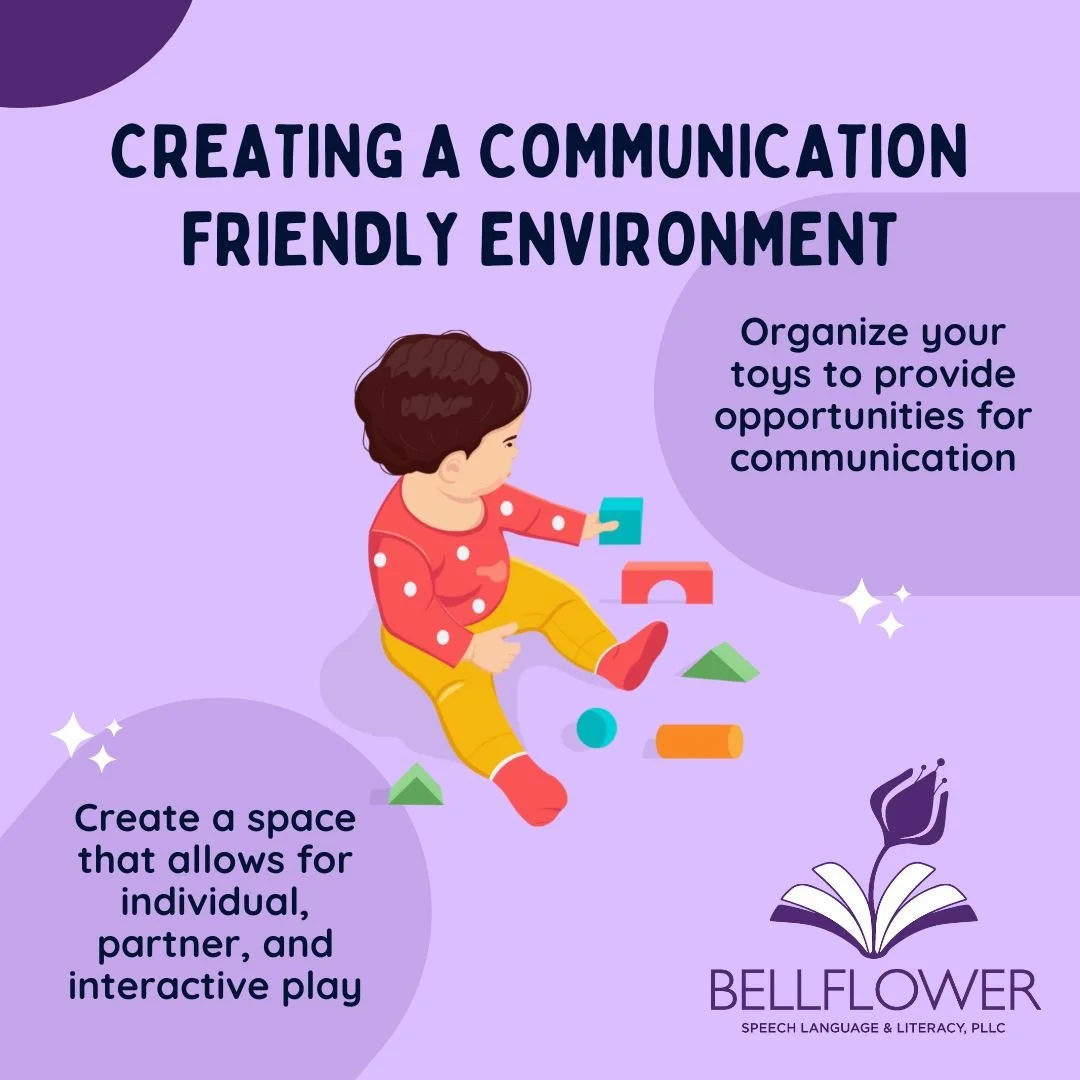Creating a Communication Friendly Environment
Introduction
A communication friendly environment is a space that provides opportunities for language and promotes communication in children. The environment in which a child learns can be an important factor in supporting their communication and language development. The goal of structuring the learning environment is to ultimately support speaking and listening skills, social language skills, and play skills. Whether you have a dedicated room in your house or a toy corner to sit and play, there are many ways that you can structure that space to help foster and promote language!
Creating a communication friendly space should allow for individual, partner, and interactive play. An open, welcoming space will provide opportunities for self-directed play to create or replay scenarios they have experienced and improve their language.
Let’s Talk Space
It is important to consider the layout of the area when creating a communication friendly space. The area should offer the opportunity for individual and partner play. Will you play on the floor with toys? Is your activity better accomplished at a table? Is there enough space to engage in play comfortably? The environment should create opportunities for communication. Interactive areas are another great way for children to expand on a play theme, practice using problem solving skills and work as a team to come to a solution. Children should also have the opportunity to direct their own play and create scenarios that they are familiar with or may have experienced before. This type of play encourages good communication and language building skills.
Organizing your play space, and reducing the number of options available in your place space, can increase the number of opportunities for communication. Clear boxes means your child can see the toys and point to and verbally request their preferred toys, without being overwhelmed by the number of choices.
Organization
A play space organized in a way that requires your child to communicate is key! Toy organization allows for opportunities to build communication, increase attention and concentration (eliminate as much visual STUFF as you can when teaching), and create opportunities for expression. Organization should tempt a child to request an activity, maintain their attention, comment on quantities/qualities and make choices. Giving children choices to make independently enhances their communication skills. They feel in control of their play and are more likely to comment on what they are doing. Limiting the choices can support children further, as too many options may cause the children to become distracted, overwhelmed, and to lose interest quickly. Play materials offered in small quantities are more appealing and manageable while still providing plenty of opportunities to make choices and communicate. Displaying toys in a child’s eyeline but out of reach will encourage requests for desired items. Storing these toys in clear containers will offer opportunities to request actions such as “open” and “help.” Structuring your environment with these ideas in mind will help make communication fun, motivating, and effective.
If you have any questions about your child’s play or language development, please feel free to contact us.



